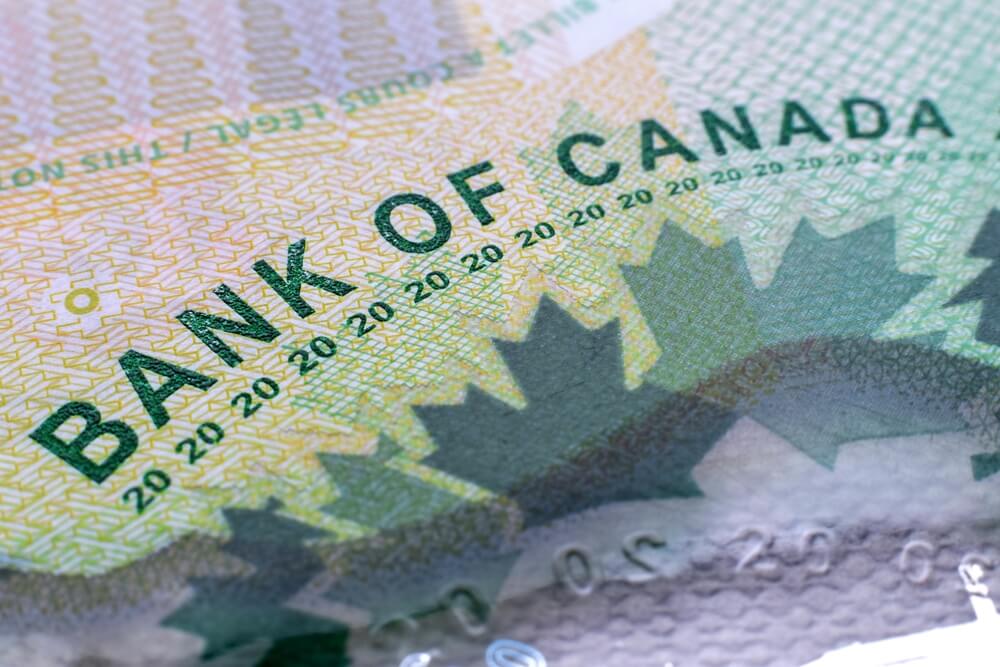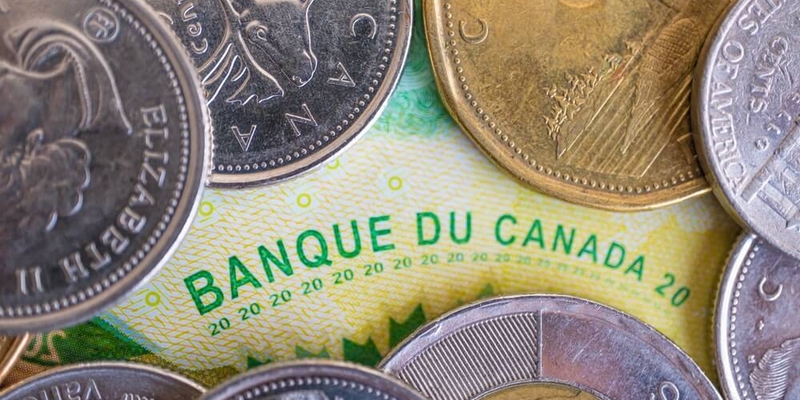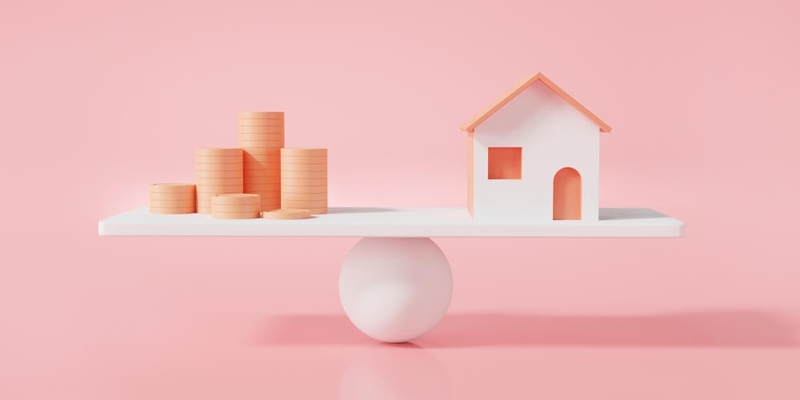Mortgage Down Payment in Canada
Your guide to figuring out your mortgage down payment
What is a mortgage down payment?
A mortgage down payment is a percentage of a home’s sale price that is paid to a mortgage lender upon purchase of a property. The minimum amount for a down payment in Canada is 5%, and a buyer who puts down less than 20% must purchase mortgage loan insurance.
Mortgage loan insurance lets the buyer get a mortgage for up to 95% of the purchase price of a home. It also ensures the buyer gets a reasonable interest rate, even with a small down payment. The purpose of mortgage loan insurance is to protect the lenders from insolvency. It also helps in stabilizing the housing market, as during an economic downturn it would be harder to save for a down payment. Mortgage insurance helps ensure the availability of mortgage funding.
A lender pays an insurance premium on mortgage loan insurance and passes this cost on to the buyer by adding it to the mortgage payment. It is up to the buyer to pay it in a lump sum or add it to the mortgage and include it in mortgage payments.
Mortgage loan insurance premium is calculated as a percentage of the loan and is based on the size of the down payment. The larger the value of the house that you borrow and the smaller your down payment, the more your insurance premium will be.
Premiums are calculated as a percentage of the property price and vary for mortgage down payments of 5% to 9.99%, 10% to 14.99% and 15% to 19.99%. The greater the mortgage down payment, the less of an insurance premium you’ll have to pay.
Different property values have distinct mortgage down payment requirements. For example, a home valued at less than $500,000 must have a down payment of at least 5%; a property that costs between $500,001 and $999,999.99 requires a 10% down payment on the portion above $500,000; and a property valued at more than $1 million must have a down payment of at least 20%. If you’re self-employed or have a poor credit history, your lender may require a larger down payment.
Calculating your mortgage down payment in Canada
The minimum down payment depends on the purchase price of the home.
Purchase price of under $500,000
The minimum down payment required for a house priced at $500,000 or less is 5% of the purchase price. For instance, if the purchase price of your home is $400,000, you will need to make a down payment of at least $20,000.
Purchase price of $500,000 or higher
A property sold for between $500,001 and $999,999.99 requires a down payment of 5% on the first $500,000 and a 10% down payment on the remainder. For instance, the purchase price of your home is $600,000, your minimum down payment can be calculated by adding 2 amounts. The first amount is 5% of the first $500,000, which is equal to $25,000. The second amount is 10% of the remaining balance of $100,000, which is equal to $10,000. Adding both amounts together give you a total of $35,000 as down payment.
Purchase price of $1 million or more
If you are purchasing a property with a price of more than $1 million, be ready to shell out at least 20% of the purchase price for down payment. For instance, if your property is priced at $1,099,000, then you’ll have to pay 20% of the purchase price, which is equal to $219,800.
If you want to avoid the hassle of doing all the math, use RATESDOTCA’s mortgage calculators to help you with identifying the right numbers.
Down payment and your loan-to-value ratio
Loan-to-value ratio, or LTV, is an assessment of lending risk that financial institutions and other lenders identify before approving a mortgage. A loan assessment with high LTV ratio is considered a higher-risk loan. Therefore, if the mortgage is approved, the loan has a higher interest rate.
Another factor that plays a key role in determining your LTV is how much down payment you pay. To calculate the LTV ratio, the loan amount is divided by the fair market value of the home as determined by a property appraisal. The larger your down payment, the lower your LTV (and vice versa).
A lower LTV ratio presents less risk to lenders. This is because the buyer comes with more equity in their home, which means that the buyer has a higher stake in the property relative to the outstanding loan balance. In short, lenders assume the buyer will be less likely to default on the mortgage.
Besides assessing the buyer’s risk, lenders use the LTV ratio to price the mortgage. If your LTV ratio is lower, you’ll likely receive a lower interest rate. But if the LTV ratio exceeds 80%, meaning you’ve put less than 20% of the home’s value as a down payment, expect higher interest rates.
Mortgage insurance
A buyer who wishes to purchase a home with a down payment of under 20% must pay mortgage loan insurance. With mortgage loan insurance, a buyer can take a mortgage by paying up only 5% of the purchase price of a home as down payment. It also enables the buyer to get a reasonable interest rate, even with a low-down payment.
Mortgage loan insurance, also sometimes known as mortgage default insurance, protects the lender in case a buyer cannot make mortgage payments. It does not protect the buyer. If your down payment is less than 20% of the price of your home, you must buy mortgage loan insurance.
In case the buyer is self-employed or has a poor credit history, the lender may require the buyer to pay a higher down payment. Mortgage loan insurance is not available if the purchase price of the home is $1 million or more, or the loan doesn’t meet the mortgage insurance company’s standards.
Cost of mortgage loan insurance
The buyer pays a premium (fee) for the mortgage loan insurance ranging from 0.6% to 4.50% of the amount of the mortgage. The premium depends on the amount of the down payment. The bigger the down payment, the less you pay in mortgage loan insurance premiums.
Ontario, Manitoba and Quebec apply provincial sales tax to mortgage loan insurance premiums. Your lender can’t add the provincial tax on premiums to your mortgage. You must pay this tax when you get your mortgage.
Conventional mortgage down payment sources
- Personal savings: The most common source of mortgage down payments is from savings. This can include money saved in chequing or savings accounts, tax-free savings accounts (TFSAs), GICs, stocks or other types of investments.
- RRSP: The RRSP Home Buyers’ Plan lets you withdraw the money tax free, as long as the full amount is repaid back into the plan within 15 years. You may withdraw up to $35,000 from your RRSP as a first-time homebuyer. To qualify, the funds must be in your RRSP for at least 90 days. If you are a first-time homebuyer and have available contribution room, it could make sense to use your mortgage down payment savings to make an RRSP contribution. Since you’ll be purchasing a property, you will be able to withdraw the funds from your RRSP for your mortgage down payment, while also receiving a refund as a result of your contribution.
- Funds borrowed against proven assets: Borrowed funds against an existing asset is an acceptable source of funds for the down payment, closing costs, and reserves, since borrowed funds secured by an asset represent a return of equity. Assets like automobiles, artwork, collectibles, real estate, or financial assets, such as savings accounts, certificates of deposit, stocks, bonds, may be used to secure funds.
- Sweat equity (<50% of minimum required equity) for self-constructed property
- Land unencumbered: If a buyer owns a land that has not been constructed upon or has been kept for future development, it can be used to borrow funds against. Unencumbered land can be shown to the lender as a potential asset.
- Proceeds from the sale of another property: A buyer can take the proceeds from the sale of an existing property to put towards the down payment of the new purchase.
- Non-repayable gift from immediate relative: You can use funds that are given to you as a gift from your parents, grandparents or siblings. A gift letter will have to be signed by the family member providing the gift that confirms that the money will not have to be repaid.
- Equity grant is non-repayable grant from federal, provincial or municipal government.
Benefits of paying a large mortgage down payment
The more money you are ready to put up front when buying a home, the lower your monthly cost and overall interest paid over the lifetime of the loan.
While it may not always be an option for homebuyers, a larger down payment towards a home could be a smart decision to own a larger amount of equity in your house to draw on if you need to access it through a home equity loan or HELOC. This is usually helpful if one needs to remodel or just requires the cash amount for a large expense or emergency.
A larger down payment could also qualify you for a lower interest rate on your mortgage, especially if you can get the loan amount below the jumbo loan threshold. You also won't need to pay for mortgage loan insurance if you pay 20% or more as down payment and you may have an advantage over other potential buyers in the case of multiple bids by making a more attractive offer.
Ready to find a mortgage for your dream home?
See and compare the best mortgage rates in Canada.
Mortgage Calculators
Land Transfer Tax Calculator
Home Closing Cost Calculator
Home Sale Proceeds Calculator
Mortgage Payment Calculator
Mortgage Renewal Calculator
Mortgage Affordability Calculator
Mortgage Stress Test Calculator
Mortgage Insurance Calculator
Land Transfer Tax Calculator
Home Closing Cost Calculator
Home Sale Proceeds Calculator
Frequently asked questions about mortgage down payment
Here's everything you may be wondering about mortgage down payments in Canada.
How much down payment is required in Canada?
The minimum down payment is based on the purchase price of your home. If the purchase price of your home is $500,000 or less, the minimum amount of down payment required is 5% of the purchase price. For a home priced between $500,000 and $999,999, the minimum down payment required is 5% of the first $500,000 of the purchase price and 10% for the portion of the purchase price above $500,000. For a home of over $1 million, a 20% down payment of the purchase price of the home is a must. If you’re self-employed or have a poor credit history, your lender may require a larger down payment.
Normally, the minimum down payment must come from your own funds. It’s better to save for a down payment and minimize your debts.
Is it better to put down a large down payment?
Yes, it is always better to put a larger amount towards the down payment if your pocket permits. The larger your down payment, the lower will be your monthly cost and overall interest amount paid over the lifetime of the loan.
You could also avoid the CMHC mortgage loan insurance altogether by paying a 20% down payment of the purchase price, allowing you to save money in the long term and more of your payments would go to your principal amount.
What is the average down payment on a house in Canada?
In Canada, the average down payment on a house varies from province to province because the national average home price depends on where you live. As per our inhouse data for Q1 2021 data, home buyers in Quebec put 15% on an average towards down payment, which was less compared with other provinces. Down payment continued to be an average of about 20% both in Ontario and British Columbia.
According to our mortgage payment calculator, if we use the average price for a home in Canada, which, as of August 2022, is $637,673 according to the Canadian Real Estate Association, the typical down payment will cost you around $38,771.
How much cash deposit do I need for a house in Ontario?
When you place an offer to buy a house, the cash deposit demonstrates the buyer’s commitment towards the deal. The cash deposit shows the buyer is seriously interested in the purchase of the home and is acting in good faith until the deal closes. The deposit is either adjusted towards the final down payment or returned to the buyer in case the deal falls out. However, there is no minimum or standard amount for a deposit. This amount can be negotiated between the buyer and the seller depending on the market situation and is defined by local practices. In a hot housing market, some sellers may find offers with a larger deposit more desirable, and that could become a deciding factor in selling. Some sellers may see a larger deposit as an indicator of a stronger level of commitment from the buyer.
Your deposit can be protected or unprotected, depending on your offer presented to the seller. If you place a no-condition offer, you can lose your deposit if the deal fails to close. If you don't want to lose your deposit in case of an issue, you can place a conditional offer. The condition can be mortgage approval or home inspection, depending on your needs.









